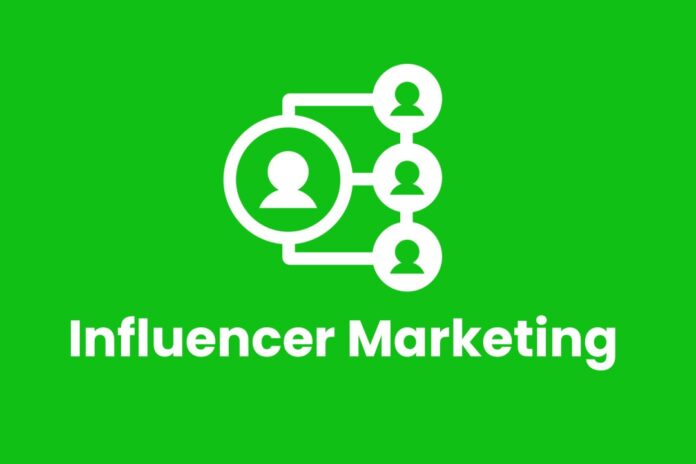Influencer marketing has emerged as a prominent strategy for contemporary businesses seeking to engage with their target audience in the digital era. It entails forming partnerships with individuals who boast substantial online followings, often within specific niches or industries.
These influential figures can encompass a broad spectrum, ranging from renowned celebrities to niche-specific micro-influencers. What renders influencer marketing particularly alluring is its potential to sway the opinions and purchasing decisions of its dedicated followers.
Nevertheless, to accurately gauge the efficacy of influencer marketing and ascertain whether it delivers a commendable return on investment (ROI), enterprises must navigate a landscape defined by diverse considerations and a multitude of performance metrics.
Understanding Influencer Marketing
Influencer marketing is a dynamic strategy that hinges on partnerships with individuals possessing substantial online followings, frequently within specific niches or industries. This diverse spectrum of influencers spans from renowned celebrities with millions of followers to more niche-focused micro-influencers catering to a smaller, but highly engaged audience.
What renders influencer marketing particularly compelling is its innate capacity to wield substantial influence over the thoughts and buying choices of their dedicated followers. The allure of influencer marketing rests in its unparalleled ability to access and engage with a profoundly committed and precisely targeted audience.
Yet, the successful implementation of influencer marketing necessitates a comprehensive evaluation that takes into account an array of factors and a multitude of performance metrics to ascertain its return on investment (ROI).
Measuring ROI in Influencer Marketing
- Set Clear Goals: Before launching an influencer marketing campaign, it’s crucial to define your goals. Do you want to increase brand awareness, drive website traffic, boost sales, or something else? Clear objectives will help you measure ROI effectively.
- Track Metrics: To gauge the impact of your influencer marketing efforts, track relevant metrics. These can include:
- Engagement: Measure influencer campaign success by tracking likes, comments, shares, and overall interaction on influencer posts. High engagement indicates a positive impact on your audience.
- Website Traffic: Assess the effectiveness of influencer marketing using tools like Google Analytics. Check for increased influencer-driven traffic to your website, a key ROI indicator.
- Sales and Conversions: Calculate ROI by directly attributing sales or conversions to the campaign. This tangible metric helps gauge the campaign’s impact on revenue.
- Brand Mentions: Keep a watchful eye on how frequently your brand is mentioned in influencer content or comments. Elevated brand mentions signify heightened brand visibility and influence.
- Attribution Models: Utilize attribution models to determine how influencer marketing contributes to conversions. Multi-touch attribution models consider all touchpoints in the customer journey, providing a more accurate picture of ROI.
ROI Calculation: Calculate ROI using the following formula:
- Lifetime Value (LTV): When evaluating the impact of influencer marketing, it’s crucial to consider the long-term effects on customer lifetime value (LTV). Influencer campaigns can lead to repeat purchases and foster brand loyalty, resulting in sustained revenue streams. Over time, this can significantly enhance your ROI, making it imperative to assess the enduring influence of influencer marketing on LTV.
- Surveys and Feedback: To gain deeper insights into your influencer marketing’s effectiveness, collect feedback from customers who discovered your brand through influencers. This qualitative data can reveal the campaign’s impact on sentiment, perception, and overall effectiveness, complementing quantitative metrics and providing a holistic view of success.
- Competitor Benchmarking: Comparing your influencer marketing ROI with industry competitors offers valuable insights into your performance. Analyzing how your ROI stacks up helps you understand your standing within your industry, identify areas for improvement, and learn from successful strategies employed by competitors.
- Calculate Costs: Precise cost calculation is essential for determining influencer marketing ROI. Consider all campaign expenses, including influencer fees, production costs, and additional outlays. Thorough cost accounting ensures an accurate ROI calculation that reflects the full investment in your influencer marketing initiative, aiding in informed decision-making.
Understanding with Examples
To make it easier to understand, let’s take a look at examples of influencer marketing with their goals, metrics, and results to figure out how to do it and where to optimize.
Fashion Brand X:
- Goal: Increase sales for a new clothing line.
- Influencer Collaboration: Partnered with a fashion influencer with 500K followers.
- Metrics: Tracked sales generated through a unique influencer discount code.
- Results: Generated $50,000 in sales with a $10,000 influencer fee. ROI = ($50,000 – $10,000) / $10,000 = 4 or 400%.
Fitness App Y:
- Goal: Boost app downloads and subscriptions.
- Influencer Collaboration: Teamed up with a fitness influencer with 1 million followers.
- Metrics: Monitored app downloads and subscription sign-ups during the campaign.
- Results: Gained 50,000 new app downloads and 10,000 new subscriptions, with a campaign cost of $20,000. ROI = ($10,000 – $20,000) / $20,000 = -0.5 or -50%.
These examples demonstrate how influencer marketing ROI can vary based on campaign objectives and execution. In the first case, the ROI was highly positive, while in the second, it was negative, indicating a need for optimization.
Final Words
Influencer marketing can be a potent tool for businesses seeking to expand their reach and engage with their target audience. Measuring the ROI of influencer marketing campaigns is crucial to understanding their effectiveness. By setting clear goals, tracking relevant metrics, calculating costs, and considering the long-term impact, businesses can make informed decisions about their influencer marketing strategies. Remember that ROI is not just about immediate sales; it encompasses brand awareness, customer lifetime value, and the overall impact on your business’s bottom line. So, if you’re considering influencer marketing, ensure you have a well-defined measurement strategy in place to maximize your returns.





